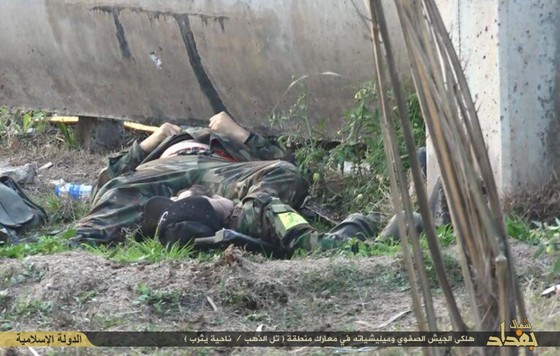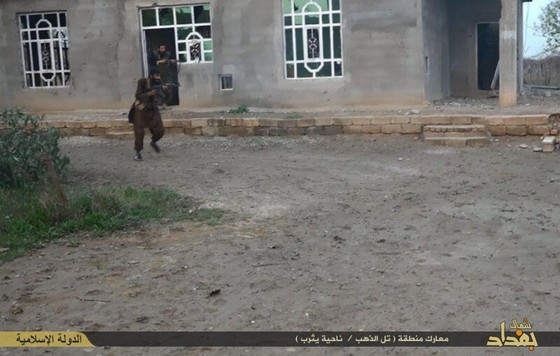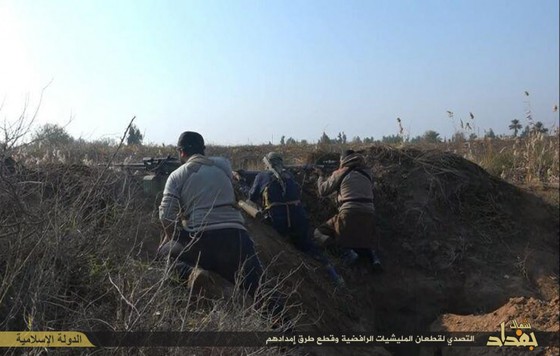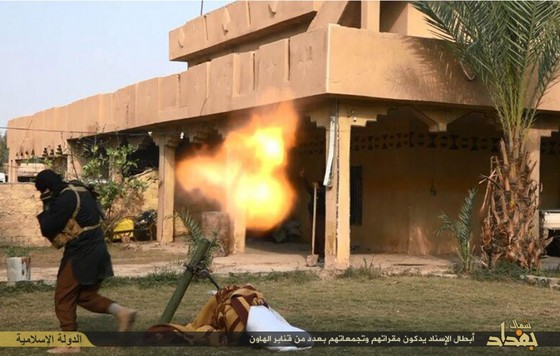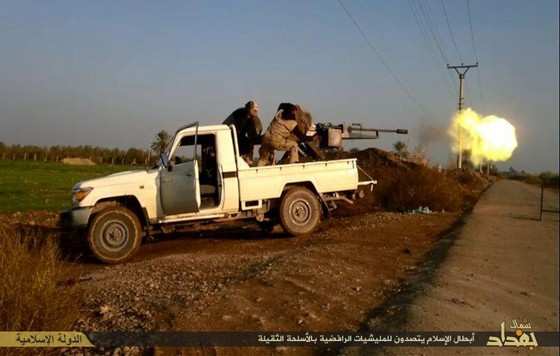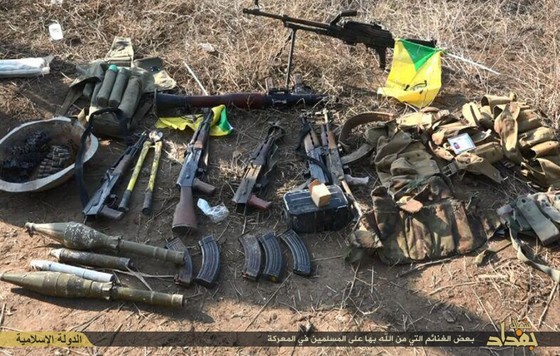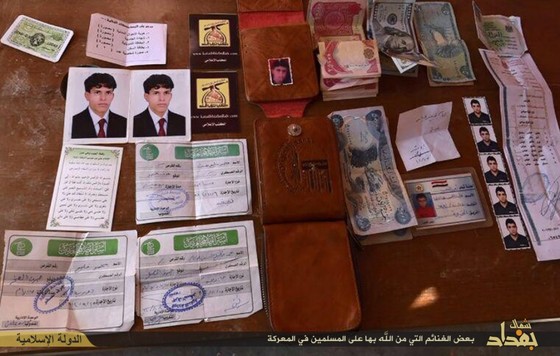The Islamic State has released pictures online purporting to show its fighters routing a unit from the Hezbollah Brigades near the towns of Yathrib and Tal Gold in Salahaddin province. Based on the date given in the photo set, the fighting took place on Dec. 19.
The photo set was disseminated on Twitter by Islamic State supporters after being posted elsewhere online. The photos bear the title of Wilayat Shamal Baghdad (North Baghdad), which encompasses the area of Yathrib, Tal Gold (or Tal Dhahab), Dujail, Balad, and Duloaiya. The wilayat is just one of the 20 proclaimed administrative divisions of the Islamic State.
A number of pictures detail Islamic State fighters engaging the Hezbollah Brigades unit with small arms fire, mortars, rocket-propelled grenades, and with at least one technical. The last few pictures detail the weapons, ammo, and gear that were taken from the dead bodies of Hezbollah Brigades fighters, as well as their identification cards. Other photos, which are too graphic to be reproduced here, show the corpses of at least 12 Hezbollah Brigades soldiers.
The pictures were released while a joint effort is underway between the Iraqi Army and several Shiite militia groups to retake Yathrib and its surrounding areas. The current offensive on Yathrib, which is reportedly being led by the Iraqi 17th Division, follows an offensive launched earlier this month. On Dec. 4, the Hezbollah Brigades claimed that the Tal Gold area was completely cleared. On Dec. 5, the Iraqi Army said that its flag flew above Tal Gold and that all the checkpoints in Yathrib were under its control. On Dec. 7, Asaib al Haq, (or the League of the Righteous), another Shiite militia supported by Iran, released a video showing its forces with the Iraqi Army near Yathrib making a similar claim.
However, on Dec. 18, the League of the Righteous released a new video claiming to be making preparations for the liberation of Yathrib. On Dec. 22, it was reported that at least seven villages were taken back by the Iraqi Army and its Shiite militia allies. The current status of Yathrib is unclear, but the area has long been a contested area, with the territory changing hands many times.
The Islamic State is not the only anti-government force operating in the Yathrib area. The Islamic Army of Iraq, an Islamist insurgent group that has allied with jihadists in the past, took credit for shelling Joint Base Balad in Yathrib on Dec. 11.
The Yathrib area and the nearby cities and towns of Dhululiyah, Balad, Ishaqi, Dujail, Dojama, Khalis, Tarmiyah, and Taji are key terrain for the Islamic State. The cities and towns are in the northern Baghdad "belt" and sit along two highways that run between Samarra and the capital city Baghdad, both of which are under the Iraqi government's control. The Islamic State seeks to control the northern belt in an effort to strangle the capital. [For more details on the jihadist group's strategy in Iraq, see LWJ report, ISIS, allies reviving 'Baghdad belts' battle plan.]
The Islamic State has been able to launch attacks on Dhululiyah, Balad, Ishaqi, Dujail, Dojama, Khalis, Tarmiyah, and Taji from the Thar Thar region to the west and Miqdadiyah to the east. Some of the towns have changed hands between the Islamic State and Iraqi forces and allied militias several times since the jihadist group seized control of Mosul and pushed into Salahaddin and Diyala provinces in June. More than six months after the Islamic State launched its offensive to take control of northern and central Iraq, the northern Baghdad belt remains contested between the Iraqi military and allied Shiite militias on one side, and the Islamic State and its Sunni allies on the other.
The Iraqi military has scrambled units from across the country as well as deployed Iranian-backed Shiite militias in an effort to defend the road between Samarra and Baghdad. Shiite militias, including the Badr Brigade, Hezbollah Brigades, Asaib al Haq (League of the Righteous), and Muqtada al Sadr's Promised Day Brigade, all of which are supported by Iran's Qods Force, have been called in to reinforce beleaguered and demoralized Iraqi forces along the Samarra-Baghdad corridor and elsewhere in Iraq. These militias have remained on the front lines and have secured cities and towns, many of which are predominantly Sunni communities. The Islamic State has had some success against these militias; in the first week of December, an Islamic State unit routed a Badr Brigade force near Samarra.
Iran has taken special interest in backing Iraqi security forces against the Islamic State. Qasem Soleimani, the commander of Iran's Qods Force, the special operations branch of the Islamic Revolutionary Guards Corps, has been spotted numerous times on the various fronts directing military operations. As recently as last month, he was photographed alongside Shiite militiamen in Samarra. The Qods Force commander has also been spotted on other key fronts as Shiite militias continue to battle the Islamic State.
Pictures released by the Islamic State showing the fighting near Yathrib can be seen below:
